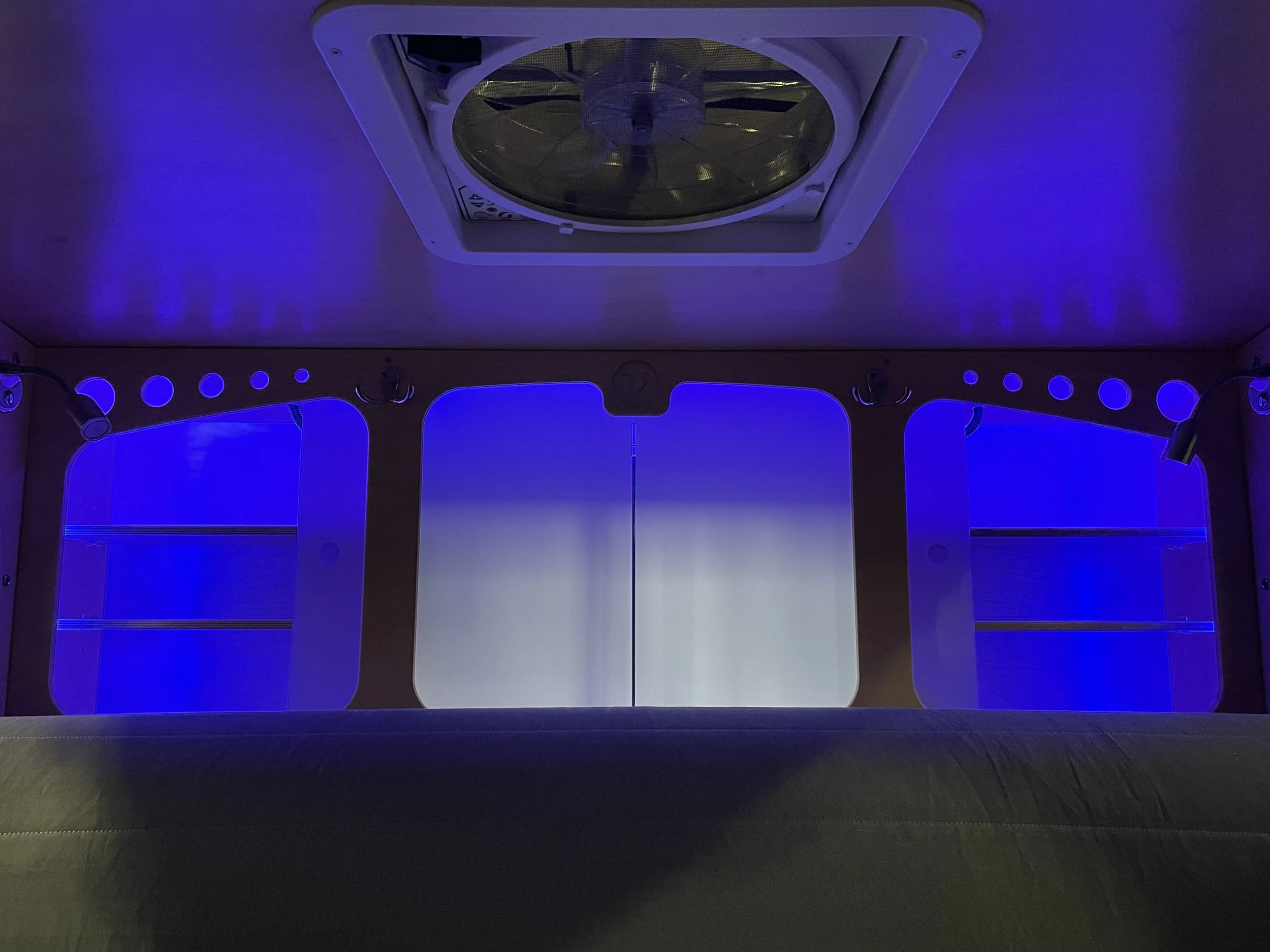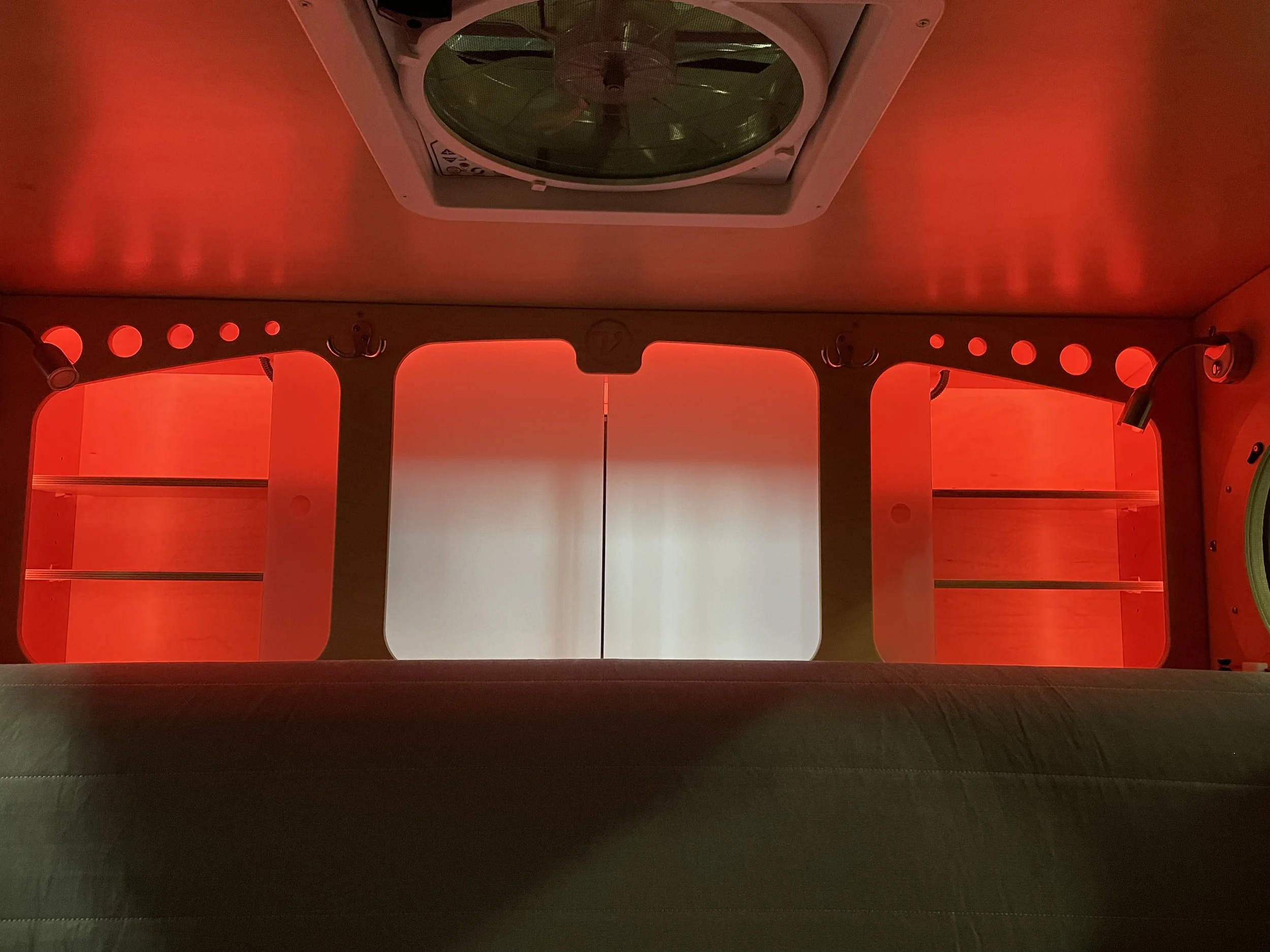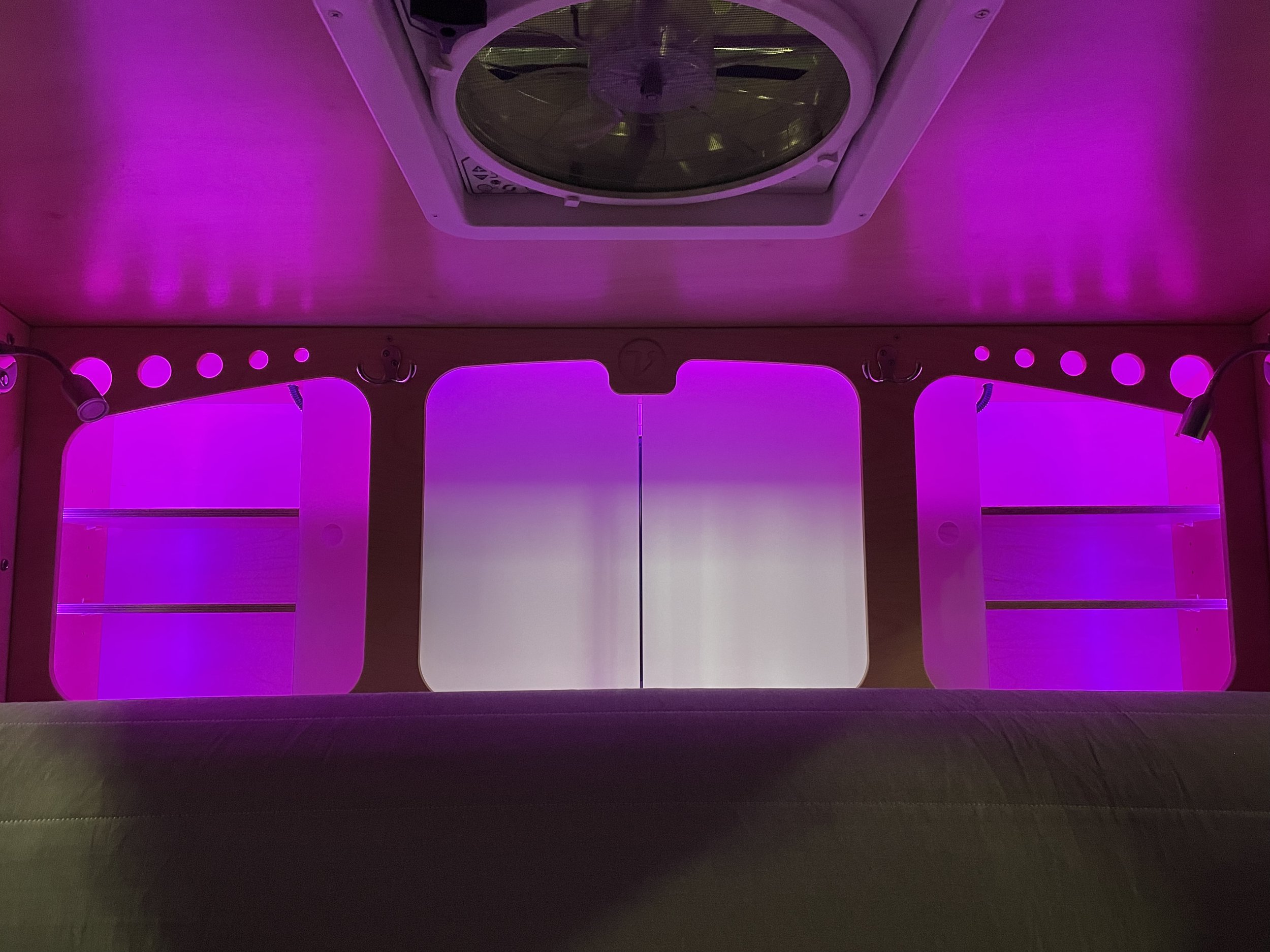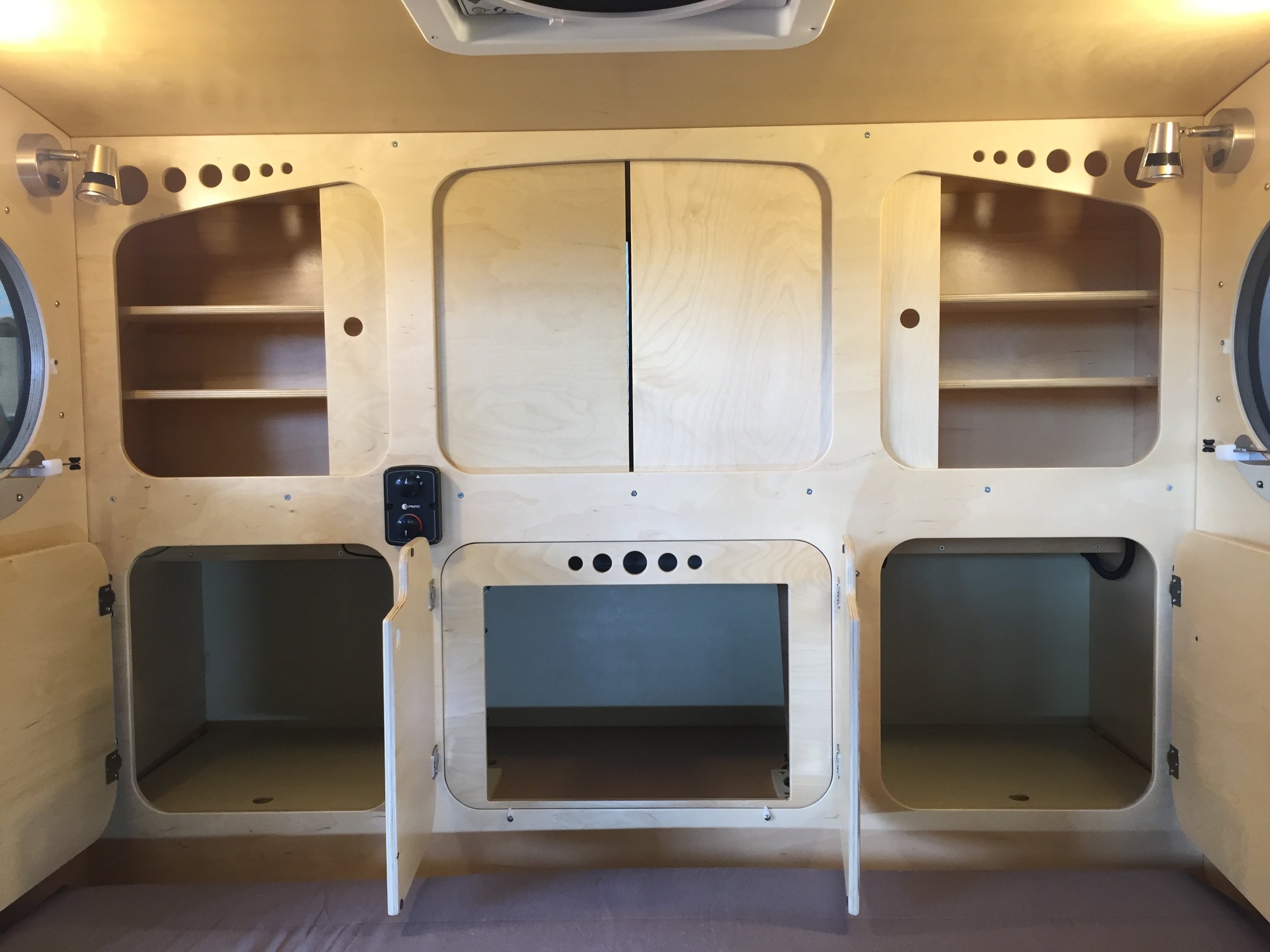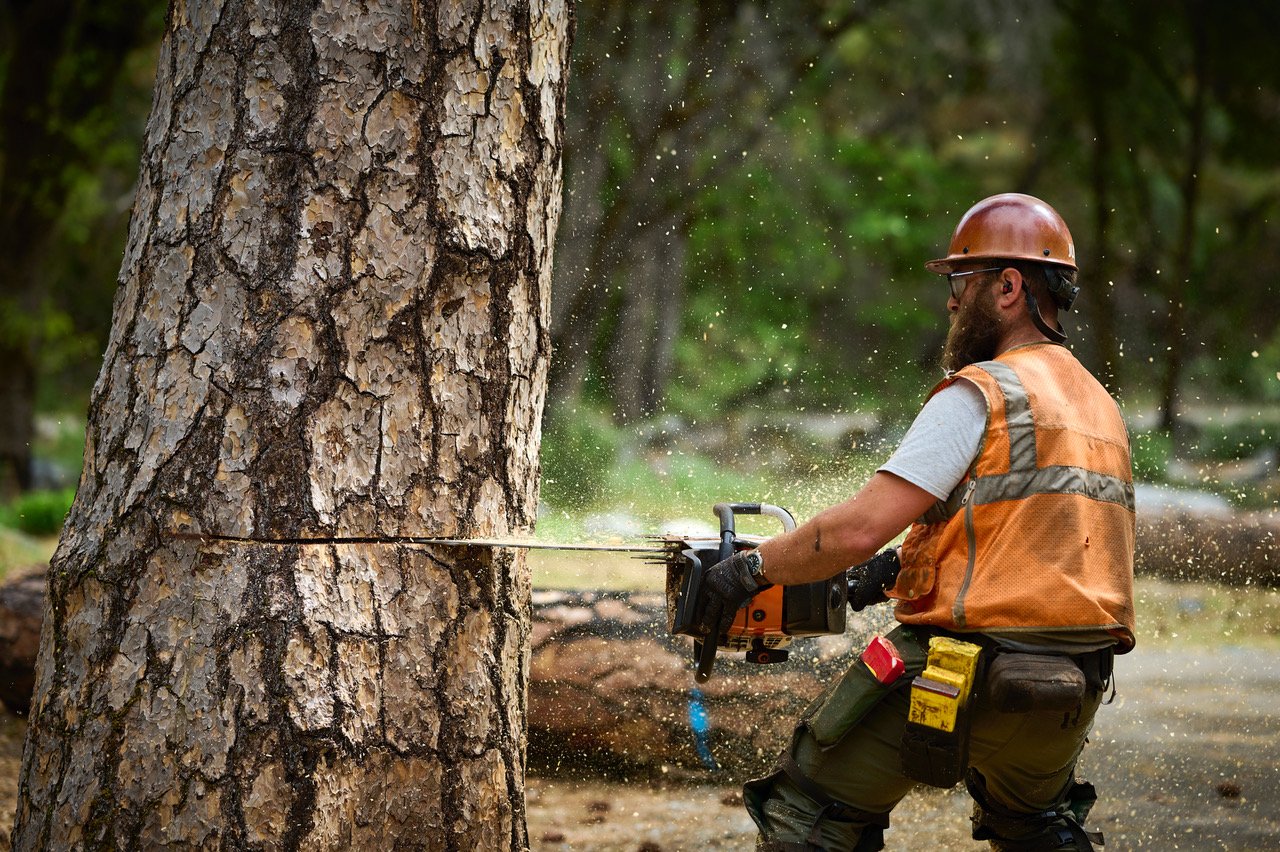With camping season fast approaching, it’s time to pull your Vistabule teardrop camper out of storage. You’ll want to make sure your camper is up to par before embarking on your next adventure - use this checklist to help guide your prep!
Table of Contents
How Often Should I Do Maintenance on My Teardrop Camper?
Cleaning Your Camper
What Do I Need to Check for Maintenance on My Teardrop Camper?
Battery & Lighting Checks
Exterior Checks
Internal Checks
How Often Should I Do Maintenance on My Teardrop Camper?
How often your camper needs maintenance will depend heavily on where you live and where you travel with your camper! If you are taking smaller trips in moderate climates, your camper may not need as much maintenance as one that is taken on weeks long excursions in trying climates.
A general rule of thumb is to check in on your camper at least once every six months, if not every three or four. When not in use, it is ideal to store your camper indoors, however, we know that is not always possible. If that is the case, you will want to invest in a weatherproof cover to help protect your camper from the elements.
Cleaning Your Camper
Even if your teardrop camper has been in storage and protected from the elements for several months, it probably needs a little TLC before hitting the road. Take time to carefully clean both the interior and exterior of your camper. While cleaning, be sure to note any concerns or damage that you will need to address before you head out. For the aluminum side skins that help give the Vistabule that classic look, the manufacturer recommends the following:
It is certainly tough to keep things clean so periodic washing of the pre-painted metal may be desirable. Pre-paint is formulated to resist most mild cleaners and fresh water. The simplest solution of detergent in fresh warm water is best. Detergents like Tide® with less than 0.5% phosphate can be mixed at about one cup per five gallons of water. Using a sponge, soft cloth, or soft bristle brush clean an area then rinse immediately with fresh water, repeat as necessary. Take care not to scratch the painted surface.
What Do I Need to Check for Maintenance on My Teardrop Camper?
While your Vistabule as a whole is the star of the show, there are many working parts involved - sometimes more than others depending on the features you’ve selected. It is important to take the time to check in on each of these parts before embarking on a new adventure to ensure that you and your camper have the best, least stressful time possible!
Battery Checks
Whether or not your teardrop camper has been in storage or in your driveway, the best way to store your Vistabule’s battery is by bringing it inside after fully charging it. Cold weather is not kind to batteries. Keep it nice and cozy in the safety of your home to save you from having to struggle with it down the line. Vistabule recommends the following considerations when it comes to storing your battery:
If you have access to store your Vistabule inside, you may leave your trailer plugged into shore power. This will not over charge your battery. If your trailer does not have access to shore power, we recommend disconnecting your battery and storing it inside, connected to a trickle charger. There will be a slow and small charge flowing to your battery keeping it at a full charge.
Exterior Camper Maintenance Checklist
Outer Windows and Portholes
Check your windows and portholes for any cracks and damage in the sealing that could result in a lack of protection from the elements. Open and close windows and shades to be sure they are intact.
Awnings
Even if your awnings were rolled up prior to storing your camper, it is important to check them for damage or gunk. Fully open and set up your awnings to check for any signs of damage including tears or mildew. If possible, leave your awning open to allow it to air out.
Hitch
Carefully inspect the hitch on your teardrop camper as well as the vehicle you are using to tow. Check for any signs of damage, including warping, cracks, and corrosion. If you notice any signs of damage it is important to get them corrected prior to attaching the hitch to anything. Doing so could cause further damage and potential harm.
The hitch ball (or trailer ball) is a vital contact point between the trailer coupler and your tow vehicle’s hitch. Keeping the hitch ball lightly lubricated will cut down significantly on the wear caused by friction and make the ball last much longer. Some owners cover the hitch ball with a split tennis ball when it's not in use. This also keeps hands and clothing from getting grease stains.
Tires, Wheels, and Brakes
Check your tire levels on both your camper and your tow vehicle regularly. Tires on a camper are as important as they are on the vehicle you drive every day. Keep record of when you replace your tires so you have an estimate of how frequently you need to change the tires. This will not be the same for everyone as it will depend on how often and far you take your camper. Even if you had your tires changed recently, be sure to check your tire pressure and tread before departing on any trip, as the weather can directly impact tire pressure.
You will also want to periodically torque your wheel lug nuts. Torquing your wheel lug nuts is very important for maintaining secure tires. This should be done every few months depending on the use of your trailer. You will need a torque wrench and 3/4" socket. The torque pressure should be 100ft/lbs. Asking a service attendant at your nearest auto shop is also a simple option.
Lubricating your wheel bearings is another important thing to keep in mind to maintain the health and smooth function of your trailer. The frequency of lubrication may depend on several factors, including the type of trailer, the frequency of use, and the operating conditions. In addition to regular maintenance, it is also recommended to inspect the wheel bearings for signs of wear and damage before and after every trip. This can help detect any issues early on and prevent more significant problems down the road. It is always a good idea to consult the owner's manual or contact the manufacturer for specific recommendations on maintenance and lubrication for your particular trailer and wheel bearings.
Testing the brakes on your Vistabule is an essential part of ensuring safe and secure travels. To do this, start by connecting your trailer to your tow vehicle and activating the trailer brakes. With the engine running and the brake pedal pressed, move forward slowly to feel the brakes engaging. If the trailer is not stopping as it should or is pulling to one side, there may be an issue with the brakes that requires attention from a qualified technician. It's also a good idea to test your trailer brakes regularly, especially before embarking on a long trip, to identify and address any potential problems before hitting the road. Properly maintained brakes are critical to your safety and that of other drivers on the road, so don't skip this important step.
Exterior Lights
While inspecting the exterior of your teardrop camper, don’t forget to turn the exterior lights on and off. While we love camping under the stars, they do not provide enough light for you to set up camp.
This is also a great time to check the brake lights. If you do not have a buddy to help you check, an easy tip for checking the lights yourself is to back up close to a wall, garage, etc. and look for the reflection of the brake lights in your rearview mirror.
Galley
The galley is going to be a critical space on your trip - treat it that way! Check the galley to ensure the lights and outlets are working. Take time to go through the cabinets and clean them of any leftover items or dust/dirt.
If your trailer has one, be sure to test your 2-Burner stove. To do this, begin by ensuring that the propane tank is securely connected and turned on. Then, light each burner and adjust the flame to the desired temperature. Once the stove is up and running, inspect the flame to make sure it is blue and steady. If the flame is yellow or flickering, it may indicate a problem with the stove that requires further attention. Also, check to make sure that the burners are heating evenly and that there are no leaks or unusual sounds. Remember to always follow the manufacturer's instructions and exercise caution when working with propane.
You will also want to test your fresh water and plumbing system (if you have one) to ensure that everything is in working order. First, turn on the water pump. Then, check all of the faucets and valves to make sure they are not leaking and are operating properly. Fill the sink with water and check for any leaks or drainage issues. Make sure that the grey water tank (if you have one) is empty and properly secured. If you notice any issues, address them before hitting the road to avoid any potential problems during your trip.
Interior Camper Maintenance Checklist
Interior Electrical
While going through the interior, be sure to check that your fans, ventilation, and outlets all work.
Take time to walk through all and turn on all of your interior lighting. The last thing you want is to be setting up and realize that you are going to have to spend the entire evening in the dark because the lights won’t turn on!
Cabinets and Storage
Taking time to open all cabinets and storage spots can save you headaches whenever you are ready to embark. You will want to check that there are no signs of any critters making a home in your camper. Additionally, be sure to test all doors and spaces to make sure everything is still in working order.
Adventure is in the Shape of a Teardrop with Vistabule
Whether you plan to travel full time or sporadically, you will need to conduct maintenance on your camper to keep it in tip top shape. With this guide, you won’t forget anything! If you’re dabbling in the thought of getting a camper, maybe this will convince you it’s not as overwhelming as it may have seemed. If you are ready to take the leap into adventure, check out Vistabule to design and build a custom teardrop trailer. For all of our options check out our pricing guide or contact us to come check them out for yourself.

























